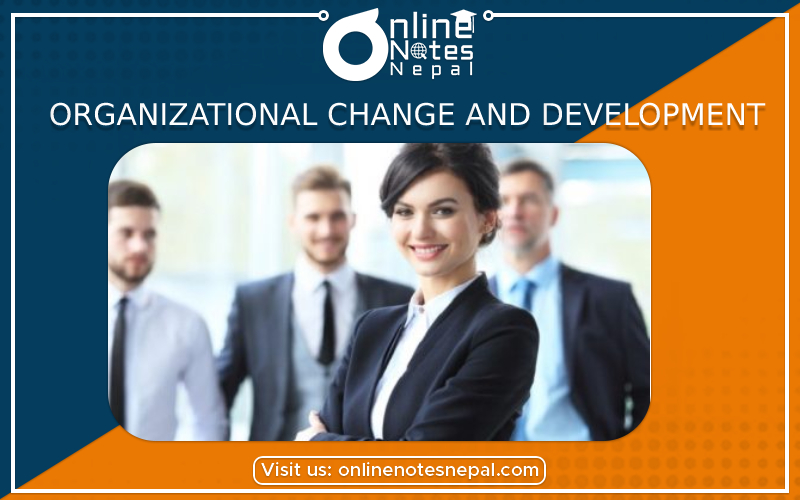Published by: Zaya
Published date: 22 Jun 2021

Concept of Organizational Change and Development:
Organizational change and development are both related to each other as organizational change is always permanent, and on the other hand organizational development is a challenge to cope with the organizational changes and prosper ahead.
Organizational change:
There is nothing permanent except change. We live in an age of transition. In fact, 'change or die' is the present-day reality. Everything in today's world is dynamic always changing.
Organizational change may be defined as “the adoption of a new idea or behavior by the organization.” Even more, the clear and simple definition is “Organization change is any alteration of people, structure, or technology.” Organizational change is thus a way of modifying an existing organization. It is a process of moving from a present state through a transitional state to a future state.
Organizational development:
Organizational Development (OD) is the process of improving organizational efficiency through planned change. It is a long-run plan to change the behavioral attitude and performance of the organization. Its main motive is to improve the overall operating efficiency of the organization. The OD paradigm values human and organizational growth, collaboration, and participation processes.
They are:
External forces are forces that are beyond the control of the organization. They are as follows:
Internal forces are within the control of the management of the organization. They are as follows:
Almost all organizational change efforts face one or more forms of resistance to change. The resistance may be overt as well as covert (exposed or hidden). It may further be:
To make the change programs effective managers need to overcome resistance to change successfully. Therefore, few ways to overcome them are as follows:
Lewin's model:
Developed by Kurt Lewin. In this model, the need for change and the goals of such a change are recognized and accepted, the management must induce the change process in such a way that change is more or less permanent. To make the change more lasting Lewin proposed three phases of the changing process viz:
He also mentioned that managers who are trying to implement change must analyze the balance of driving and restraining forces and then strengthen the driving forces or weaken the restraining forces or use both of them.
Lippitt, Watson, and Westley's model:
The above three professionals provide three factors that should be taken into account while introducing change viz:
Talking about the relationship between internal and external systems, they mentioned correspondence between external and internal reality, goals and values for action and skills, and a good strategy for action.
Dalton's model:
This model emphasizes four given specific sub-processes of learning.
It highlights that the learning process is highly complex. To implement the change process, there should be proper distribution of power among managers.
Black, Mouton, Barnes, and Greiner's model:
It is based on managerial styles. It tries to change the organization to work under team management styles. It follows the 9,9 style which is equal to the high concern for both people and task.
Regarding this model, organizational change can only be materialized with the selection of proper off-the-job management training and development, team training, on-the-job training, close integration between the functional groups, and establishing changes.
Argyris' model:
The emphasis of this model is towards a diagnosis of the needs, attitudes, and feelings of the staff. The methods used for purpose of measuring the above variables are
The data collected are organized and discussed with individuals briefly in a seminar. Then the training is operated for concerned staff that revaluations of needs are done. Here, attempts are made to suggest some structured innovations which were implemented.
Walsham's model:
According to this, there is an urgent need for understanding both the context and the process of change and their interaction, rather than the context alone. The elements of context include:
The process elements are:
An understanding of interactions between context and process is necessary because they, together, form different aspects of the same reality.
OD is a practical and systematic approach for launching and diffusing change in organizations. It is an attempt to improve overall organizational efficiency. It reflects a broad and comprehensive approach to individual organization relationships.
Characteristics of OD:
OD values:
The following identifies the underlying values in OD efforts:
OD objectives and goals:
They are as follows:
Pre-requirements of OD:
OD processes:
Is shown below image:
 Phase in OD:
Phase in OD:
From different levels, there are interventions in OD. They are:
| Individual-level interventions | Group-level interventions | Organizational level interventions |
|---|---|---|
|
|
|